Physical Address
304 North Cardinal St.
Dorchester Center, MA 02124
Physical Address
304 North Cardinal St.
Dorchester Center, MA 02124
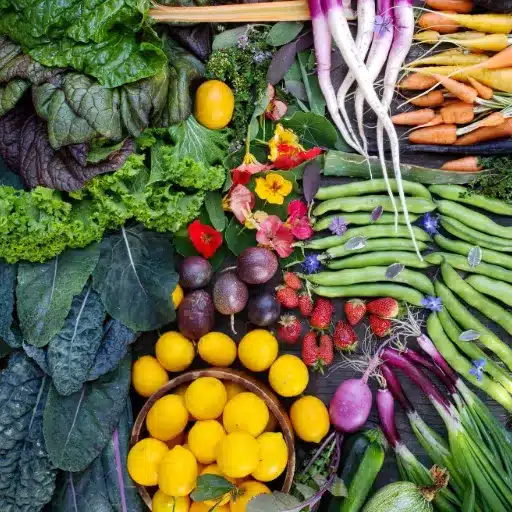
In vegetable gardening, time is often very important. The selection of vegetables can be the deciding factor in case you are a beginner restless to see results, an expert gardener trying to make the best of a short season, or just someone who wants to have fresh, home-grown produce as quickly as possible. The fastest-growing vegetables will be the main topic of this article, which are the ones that will turn your garden into a nourishing and flourishing place in no time. We will examine a range of different kinds of vegetables, from green leaves to tubers, which are full of nutrients and take just a few weeks to grow from seeding to harvesting. The time has come for getting the most out of your gardening and doing it in a tasty manner!
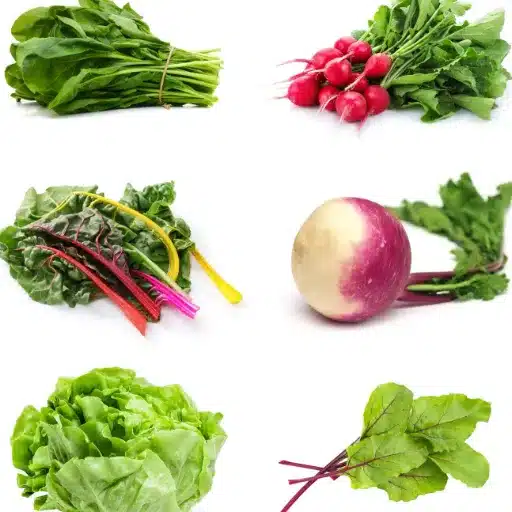
Fast-growing veggies are a great choice for plant lovers who want a swift and certain harvest. Normally, it takes about 20 to 60 days for the vegetables to reach their maturity, and hence, the growers can stagger the planting with the help of the same growing season. A remarkable example is the case of radishes, which require only 20 to 30 days for harvesting, and green leaves such as arugula and spinach, which are almost ready in 3 to 4 weeks. Besides quickness, there are many other advantages to these vegetables such as they offer a wealth of nutrition and can adapt to different kinds of weather, thus making them a perfect choice for both novice and seasoned gardeners. With the right attention and application of plants’ water and nutrients the fast-growing vegetables can very soon turn a plot of land into a source of fresh food.
Fast-growing vegetables are plants that reach their full size and are ready for harvesting in a very short time, which is usually around 20-40 days depending on the variety of the specific crop. They are perfect for those who want to make the most out of limited time or space and they will flourish if the soil is well prepared for them, getting constant watering, and adequate sunlight. The most popular ones are radishes, arugula, spinach, and lettuce, which can adapt to different conditions of growing and will deliver nutritious harvests. Growers who implement staggered planting and crop rotation can take advantage of continuous production and healthy soil at the same time.
Growing vegetables quickly presents several main advantages that are mainly related to the efficiency and sustainability of gardening practices. Quick-growing crops which are sometimes called rapid crops lead to shorter harvest cycles, thus allowing gardeners to get multiple yields in one growing season. Staking this way guarantees a steady flow of fresh and rich produce and at the same time cuts down on store-bought alternatives. Furthermore, accelerated growth does not let the bugs and diseases that thrive in long planting cycles to attack the plants, thus improving the health and productivity of the crops in general. Fast-growing vegetables that need less time to get mature also help in the optimal utilization of the garden space making them very suitable for small gardens or urban settings where every bit of land has to be used wisely.
Radishes are one of the quickest growing vegetables and can be harvested in as soon as 20-30 days. That makes them a common choice for quick harvests. Leafy greens such as arugula and spinach are also quite fast and can be harvested after 20 to 40 days. In addition, young carrots and scallions are also ready in 30 to 50 days, depending on the type and the conditions. All these short growth periods not only offer a rapid return on the planting efforts but also promote the overall efficiency of the garden, thus being perfect for getting the maximum yield in less area.
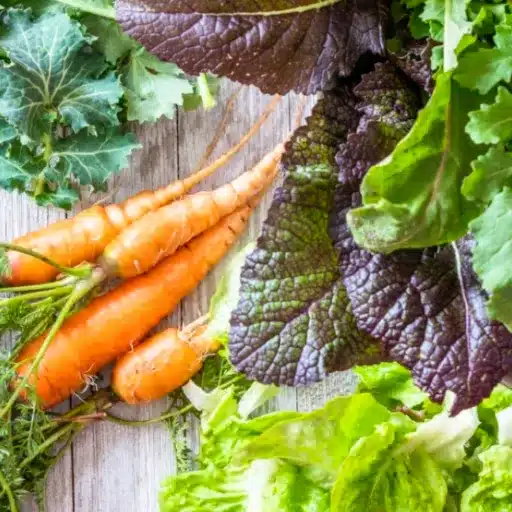
Radishes
Radishes are notorious for their speed and can be harvested in as little as 20 to 30 days. They are quite easy to handle and grow in different kinds of soil, thus they are great for producing fast and steady outcomes.
Arugula
The growth of this vegetable is so fast that 20 to 30 days is the usual time for harvesting. It has a spicy flavor that makes it a nice addition not only to salads but also to sandwiches.
Spinach
Besides the fact that it is one of the fastest-growing vegetables, it will mature in only 30 to 40 days. Spinach is very sensitive to heat but taking that into consideration, it will be possible to produce it for a longer time.
Baby Carrots
Baby carrots are a quick-maturing type of carrot, which is 30 to 50 days period till harvest. Their small size combined with their great taste makes them perfect for small gardens.
Green Onions
These, also called scallions, can be used in cooking after about another month or so of waiting. Versatile and easy to grow, green onions are the best and most useful kitchen-garden plants for any kind of dish and garden layout.
Radishes have it all when it comes to the fastest-growing and easiest-to-cultivate vegetables; hence they are called “20-Day Wonder”. They are usually harvested in only 20 days and so are perfect for impatient gardeners. Radishes like cool weather and need well-drained soil that is rich in organic matter. Radish seeds are easy to plant; they can be distributed directly into the soil at a shallow depth and spaced out very well so they won’t get crowded. These rooty veggies are is very good for continuous planting as one gets to reap throughout the growing season. To mention one thing, radishes are a good companion plant that helps in reducing the pest pressure on the neighboring crops and imparts vibrant, peppery flavors in the food dishes.
Lettuce is a rapidly growing, cold-season plant that does best in well-drained soil that remains moist. The available lettuces include crisphead, butterhead, romaine, and loose-leaf varieties, each having its own separate texture and taste. Lettuce needs full sun to partial shade and loves to be fertilized regularly with nitrogen-rich fertilizers. Either sowing seeds directly into the soil or starting seedlings indoors gives one the freedom to choose the most suitable planting schedule. To allow good air circulation between plants and thus to avoid the occurrence of diseases like downy mildew or leaf spot, proper spacing is required. Harvest can start as soon as the size of the leaves is usable, while in loose-leaf leaves varietal plants cut continuously, allowing the plant to keep on growing.
Spinach grows best in cool weather with soil temperatures between 50°F and 75°F being ideal for seed germination. It all depends on how regular the moisture supply is and at the same time good drainage is provided for the soil so that the roots do not rot. To get strong plants, nitrogen-rich fertilizers are very important, as spinach plants are very nutrient-hungry for leaf production. If you want to sow seeds, you can either directly plant them in a well-prepared outdoor bed or start them indoors in the case of early crops, which usually need 7-14 days to germinate. Planting 2-4 inches apart between plants also helps to get proper air circulation which in turn minimizes the chances of fungal diseases. Most varieties will be ready for harvesting within 30-45 days, especially if you pick tender young leaves which are best in flavor and nutrition. Frequent cutting will keep the plant in continuous growth, thus making spinach a productive and efficient choice for the gardener.
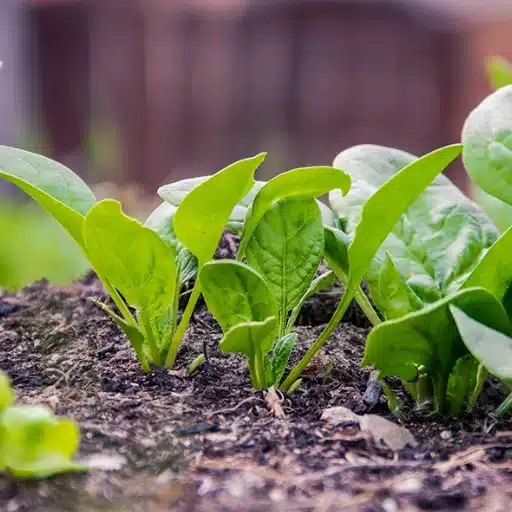
Radishes
Radishes belong to the category of super quick-growing vegetables and they come to full maturity in only 20 to 30 days at the most. They prefer well-drained soils that are consistently moist and can be grown in both full sun and partial shade. Sow the seeds directly into the soil and thin the seedlings to 1-2 inches apart after they come up for the proper development of the roots.
Lettuce
Lettuce is another fast option, certain varieties maturing in only 30-40 days. Leaf lettuces are particularly quick and can be picked gradually as the plant grows. Regular watering and spacing the plants 6-12 inches apart will keep the plants healthy and increase growth speed.
Bush Beans
Bush beans take around 50-60 days for maturity and hence are a reliable choice for a quick crop. They like full sun and rich in organic matter soil. Each seed should be placed 2-3 inches apart during planting, and watering should be done regularly to support the growth and yield to be strong.
Green Onions
Green onions or scallions can be harvested in 20-30 days. They can be grown from seeds or by planting the base of onion bulbs. Give the onions full sun and keep the soil moist for the best results.
Kale surely is a very tough and strong plant that can grow in cold and chilly temperatures. It is pretty much frost-resistant and might even become more pleasant in taste if given light frosts beforehand. Maturing of kales usually takes around 55 to 75 days depending on the type and they need well-drained soil incorporated with organic matter. The best light for kale growth is full sun, though it can also adapt to partial shade. Plant your kale 12-18 inches apart and keep the moisture levels constant so that you get thick, healthy leaves. You can start your harvest when the leaves are big enough by taking them from the outer layers and allowing the plant to keep on producing.
Arugula is a speed demon when it comes to growing, and it also happens to be a cool-season leafy green that does very well in well-drained, nutrient-rich soil that has a slightly acidic to neutral pH range of 6.0-7.0. Direct sowing into the ground or into containers is best for this plant since it matures so quickly— normally within 20-30 days. Full sun is the light condition Arugula prefers but it can also cope with partial shade, especially in warmer areas. The seeds ought to go in 1/4 inch deep and 1-2 inches apart in rows; afterward, some thinning is needed for the best growth. The plant will do great with consistent, moderate watering to keep it from going to seed too quickly and to preserve its special peppery flavor. Harvesting starts when the leaves are about 2-3 inches long; the younger leaves will be less spicy and hot and the mature ones will be more and hotter. Planting seeds every few weeks guarantees that there will be arugula throughout the growing season.
Cucumbers and zucchinis are the types of summer vegetables that give you more than you expect and they love warm weather the best, plus they need full sunlight to grow really well. Both vegetables need to be placed in soil that is rich in nutrients and drains well, and keep the moisture level constant; this way you can avoid stress on the plants and get high yields. Cucumbers will appreciate being trellised so that they get to utilize the space and air circulation; on the contrary, zucchinis will quietly spread if allowed ample room giving the desired fruits. Picking of cucumbers and zucchinis should be done regularly; cucumbers, when harvested, should be picked firm and dark green, while zucchini harvest should be done at 6-8 inches length for maintaining good texture and mild flavor. Care and maintenance, including pest management and fertilization, will go a long way in ensuring the plants stay strong and healthy even through the whole season.

Cucumbers and zucchinis are great vegetables to grow together. Cucumbers need 50-70 days, depending on the type, while zucchinis need only 40-55 days. If you want to use the indoor method, plant seeds indoors 2-4 weeks prior to the last frost date or the outdoor method when the soil warms up to at least 60°F. Keep the plants watered weekly but do not let the soil become too wet. Feed them with a balanced fertilizer every few weeks throughout their growing season. Be on the lookout for pests and diseases, and tackle the problems quickly to avoid ruining your crop. If you harvest your crop well, it will produce more fruits since you will be picking them at the right size as indicated. If you take good care of the plants throughout the entire process from seed to harvest, you will get a good yield that is healthy and productive.
The seeds of crops such as radishes, arugula, or baby greens that take less than 30 days from seed to harvest should always be of the best quality and appropriate to the climate in your area. Directly sow the seeds into soil that has been well prepared and contains a lot of organic matter to support fast growth, and also make sure to provide the right spacing so that no overcrowding occurs. Keep the soil moisture level consistent by watering regularly, and be careful not to let the soil get too dry or very wet as both situations can slow down the growth. These crops need enough sun, preferably six to eight hours per day, because they benefit from light that lasts all the time. If necessary, apply a nitrogen-rich fertilizer to promote leaf growth, and watch out for pests like aphids or diseases that may disrupt the short growing season. Harvest quickly when the crops reach their ideal size because delaying the harvest may result in a decrease in quality or flavor. Efficient planning and thorough care are the main factors that will lead to a successful harvest in such a short period.
Beans and peas stand out as the quickest growing vegetables, mainly because of their versatility and short period from seedling to harvest. The first step is to grow these plants in soil that is well-drained but enriched with organic matter in order to secure the root development that is healthy. They should never be overwatered but moderately watered to keep the moisture level in the soil just right. The crop can also be grown in the shade but still, it would be best to have the full sun for at least six to eight hours each day for good growth. If the soil is good enough already, fertilizers should not be needed at all since legumes can easily fix nitrogen; however, if the soil is poor in nitrogen, a balanced fertilizer can be applied sparingly. Pests like aphids and diseases such as fungi should be controlled through constant monitoring and immediate intervention as this is very important for keeping the plants healthy during their growing cycle. Harvest your beans and peas at the right time, which is when pods are firm but tender, that is to say, at the time when these are the best in quality and yield.
When you grow quick-maturing vegetables like radishes, lettuce, or spinach, choose a site that has soil that drains well, is rich in nutrients, and receives at least 6 hours of direct sunlight every day for the best outcome. Adding compost or organic matter to the soil increases its aeration and nutrient availability, which are both necessary for the plant’s rapid growth. Watering must be consistent but at the same time it should not cause a situation of overly soaked soil which can lead to problems like root rot and/or fungal infections. Planting every two weeks is a way of keeping the supply up throughout and not just for a single crop season. Moreover, the practice of crop rotation will not only deplete the nutrients of the soil but also will keep the pests and diseases at bay since they won’t have a place to be.
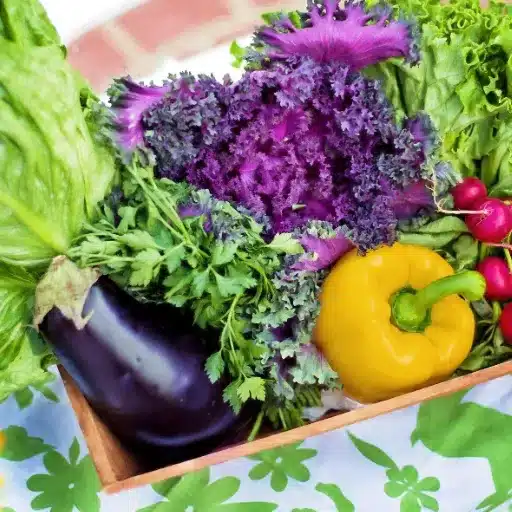
Optimize Plant Spacing: Allow the plants to be spaced very well to get or to let the sun in and the air to circulate freely. Too many plants in an area can lead to decreased yield as well as making plants more likely to get attacked by pests and diseases.
Use High-Quality Soil: Mix organic matter like compost into the soil to make it richer, and at the same time, make sure that the soil is rich in the nutrients that are essential for the strong growth of the plants.
Practice Timely Harvesting: Taking crops at their highest ripeness will not only stimulate more production but also keep the best taste and quality.
Monitor for Pests and Diseases: Making a habit of regular inspections will help to not only discover but also to control the potential issues early, thus preventing the damage from spreading.
Consistent Watering and Fertilization: Give the plants deep watering but be careful not to saturate the soil, and apply balanced fertilizers at regular intervals to keep the growth and production going on the same high level.
Figuring out the right time for harvesting is very important not only for getting the best in flavor and quality but also for getting the highest content in nutrients. The signs of readiness differ from one crop to another but generally include changes in color, size, and texture. For example, a tomato should have a rich, uniform color, and it should feel slightly soft when gently pressed, whereas a cucumber should not have a yellowish hue and should be at the size that is considered to be optimal for that variety. Root crops like carrots and radishes can be examined by their girth at the soil line to be sure that they have reached the size stated for their variety. Besides, fruits such as melons make sounds that are the signals of their being ripe, and they produce a deep, hollow sound when tapped, which is one of the signs of their being ripe. Always refer to the individual guidelines for each crop, and use sensory observations such as touch, smell, and visual inspection to confirm readiness.
If you aim at a quick yield during the first harvest, then good timing and proper techniques are the keys to success. Start with the selection of the crops that are meant for shorter growing cycles like lettuce, radishes, and baby greens, as they mature in no time. Regular checking is very important; watch the texture and color of the lettuce leaves when they are firm and vibrant, and then cutting them with clean, sharp scissors so that they regrow is the way to go. In the same way, radishes should be pulled up the moment their diameter equals the size that the variety has been labeled to avoid the roots being over-matured. To make sure that peas have the highest sugar content, do the harvesting in the morning hours when it’s cooler. Be careful not to damage the roots or stems as this will impact the next yields negatively. By adopting these specific techniques and being consistently observant, the growers can effectively draw the maximum potential of the early harvest.
Being able to harvest continuously through the growing season requires the application of a systematic approach to planting and maintenance techniques. Succession planting, which is growing crops in staggered intervals, is the guarantee of a continuous supply of produce over a longer period. Another way of prolonging the harvesting period naturally is by choosing crop varieties with different maturity dates. It is also important to keep on harvesting ripe fruits and vegetables regularly so as to stimulate new growth and keep the plants from going into the dormancy stage. Also, good soil health through regular fertilization and irrigation is very important for continued high yields. Good pest and disease control will also save the plants from the stress that usually results in lower productivity. With these strategies put in place, the farmers can not only get the maximum harvests but also increase their agricultural systems’ overall efficiency.
If your garden is an impatient one, then grow radishes and arugula these fast vegetables can be harvested in 25 to 30 days at the least. The case of the radish is particularly noteworthy because it is very famous for its quick-growing capacity and is sown directly into the earth. Arugula also germinates promptly and brings a sweet and spicy note to salads. Both these vegetables are great for the young and the old gardeners waiting for the first containers or traditional garden beds to yield fresh vegetables.
Lettuce, spinach, and kale. along with green leafy tops, are the fastest vegetables, and most of the varieties or types are such that they can be harvested in about 30 to 45 days. For instance, baby lettuce can be harvested in just 28 days after planting. Spinach is a fast growing crop and is sometimes ready to be picked in just 35 days. The same with kale, though it takes about 45 days for it to become mature. These greens will be the main plants for your vegetable garden and can be put in both pots and beds.
To start fast-growing vegetables from seed to harvest, you need to pick the right seed packets suitable for your garden. For growing vegetables like beets and summer squash where you can directly sow the seeds in the garden after the last frost, this is going to give quicker returns as you can choose to start indoors and then move the seedlings outdoors. This way, you will reap an earlier harvest, especially in the case of crops like cucumbers and zucchini. Do not forget to check the harvest date printed on the seed packets, so you can be timing your planting accurately and being aware of the best growth conditions.
To have your vegetables grow best and mature quick, you must provide sufficient light, water, and nourishment. Quick-growing plants thrive in soil that is well-drained, able to hold moisture but at the same time not to the extent that it becomes swampy. Also, you may want to consider using organic fertilizers which are going to help in the growth process. Picking the outer leaves continuously will mostly prompt further growth in leafy vegetables, so do that regularly. It is also very helpful to choose the right time for planting, ideally in the early summer or when temperatures are gardening-friendly, to increase growth rates.
Yes, there are a lot of quick-growing vegetables that can cope with light frost and thus be planted in early spring or late autumn. Spinach and kale come to mind as they can be both sown in spring and used in winter. These tough greens are and will be giving one the freshest harvest even in slightly lower temperatures. Just be vigilant of the local frost dates, so you can protect the plants if need be to ensure the harvest season is a successful one.